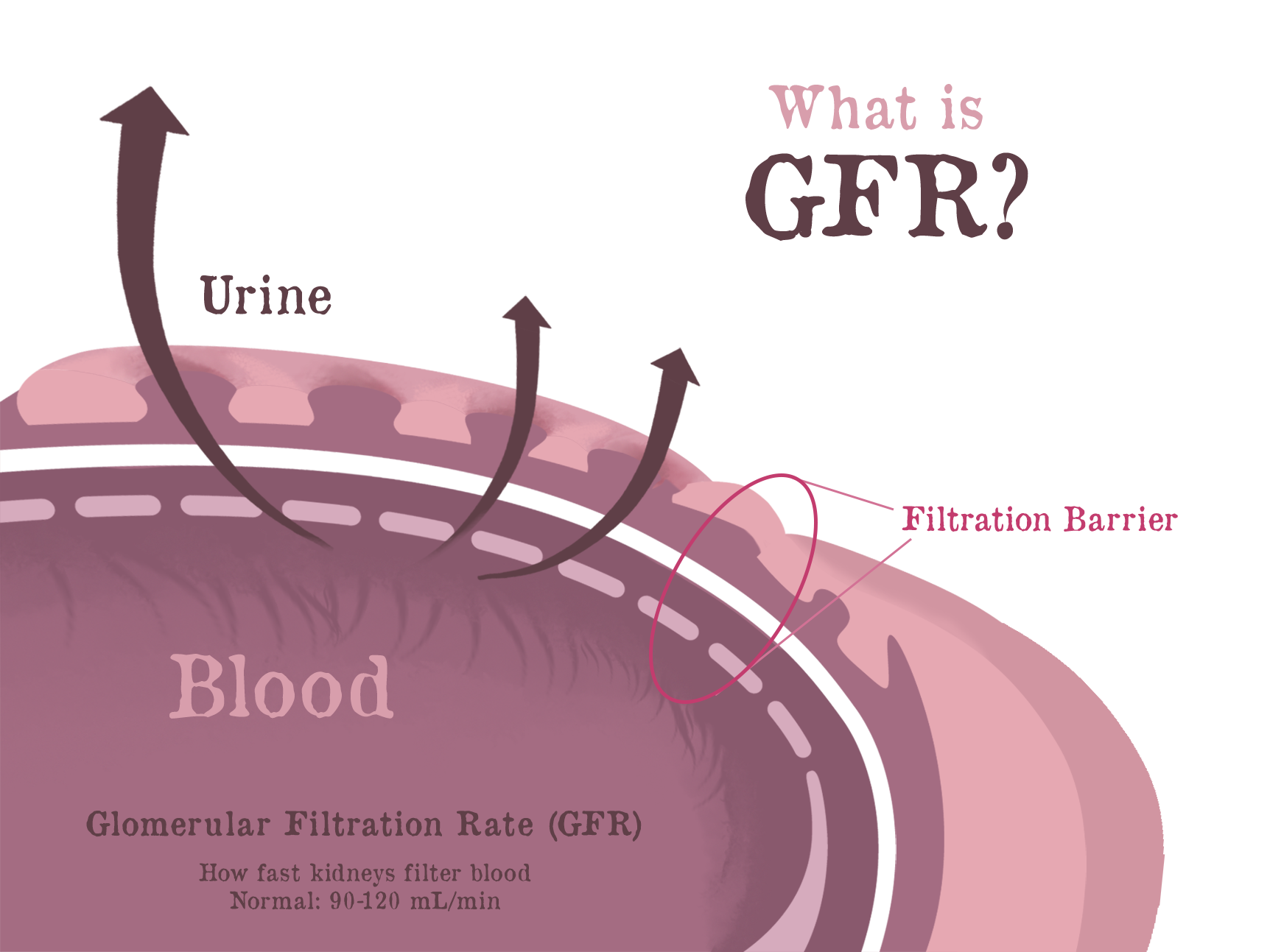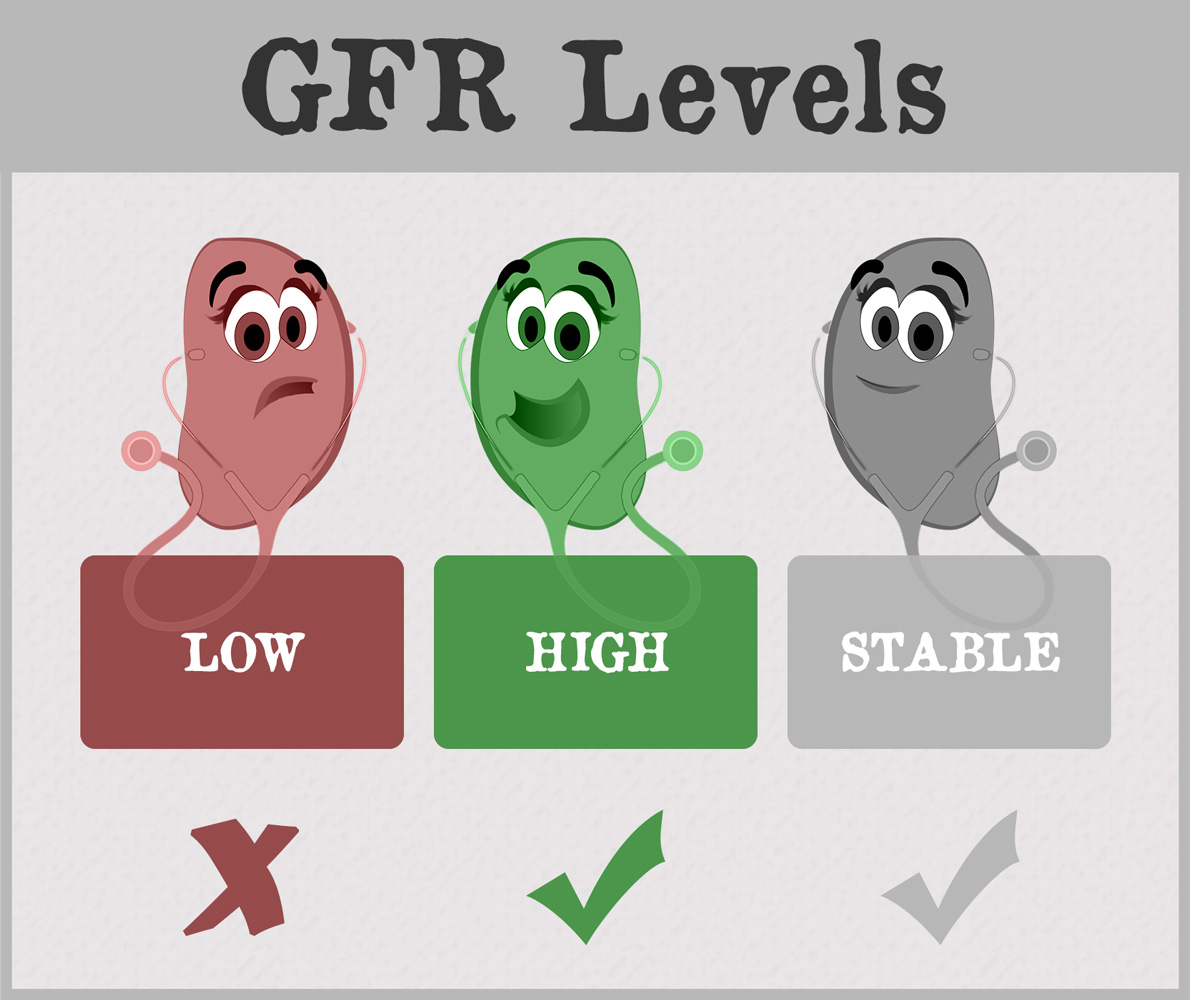What does the term ‘GFR’ mean?
GFR stands for Glomerular Filtration Rate and it gives us a rough idea of the number of functioning nephrons. It tells us how well your kidneys are working. The normal GFR is 90-120 mL/min (180 L/day), and is higher in men than women. It varies depending upon age, sex, and muscle mass of an individual. In general, the lower the GFR, the worse your kidney function. The level of GFR correlates well, albeit not perfectly, with the likelihood of developing complications of kidney disease such as CV disease, anemia, high phosphorus, and uremic symptoms.
How does the filter work?
Urine formation begins at the glomerular filtration barrier. This membrane has 3 layers. It is freely permeable to water and small dissolved solutes, but retains most of the proteins and larger particles. The main determinants of passage through this filter is molecular size and charge.
How does one calculate their ‘GFR’?
The blood lab will calculate your GFR by using a formula. The formula takes into account your age, weight, sex, and creatinine level. Many GP offices run this test when they send off your bloodwork for routine physicals (which is all the more reason to keep up with your annual checkups!) The normal values for GFR in adults are 120 mL/min in men and 100 mL/min in women.
Various factors can either increase or decrease your GFR.
Does the ‘GFR’ level determine if one has Chronic Kidney Disease?
A low GFR may be evident in patients with CKD (Chronic Kidney Disease) however you can have CKD even with a normal GFR! Abnormal findings on urinalysis or even structural changes on kidney ultrasound (even with a normal GFR) can qualify you as having CKD hence many patients may go unrecognized.
Please remember that the GFR calculated by the lab is only an estimate and there isn’t an exact correlation between the loss of kidney function and the decline in GFR. The healthy nephrons adapt and ‘hyperfilter’ making up for diseased nephons thereby masking the decline in GFR or kidney function.




